Sensory Experience of Perception
Photos


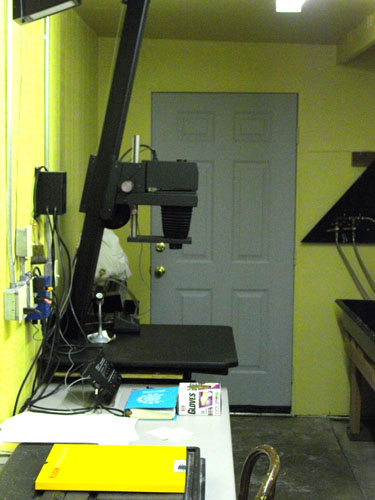
I have never taken a photography class. I am, however, not self-taught.
John Kasnetsis, a coworker in the city of Los Angeles, who had previously worked as a professional photographer, recommended The Daybooks of Edward Weston, The Zone VI Workshop, and Ansel Adams’s three books, The Camera, The Negative, and The Print. Following his suggestion I bought those books and studied them. I give copies of The Zone VI Workshop to individuals interested in photography. I keep copies of The Negative and The Print in my darkroom.
John and I discussed photographs and photography for several years on our daily bus ride from City Hall. He critiqued my negatives and prints. He recounted studying with Frederick Sommers in Prescott, Arizona, and described classes he took with Fred Archer and Ansel Adams in Hollywood. John described the invention by Archer and Adams of the zone system of metering and exposure control.
John Richardson is a photographer, and is a member of the Arroyo Arts Collective. He and I have photographed together for several years. I have learned much by observing how John works, from his willingness to share his considerable technical knowledge, and from our many discussions about what is worth taking a picture of.
John Richardson’s Camera Obscura

Tension Between Axes
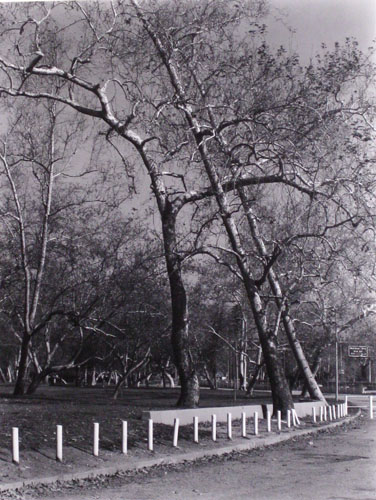
Circular form images appear throughout the website. They include paintings, photographs, a sketch on a napkin, and book illustrations. Some of these images have discernible, sometimes literal, content, ranging from the astrophysical and the metaphysical, to the the mundane or silly.
Other images, while devoid of recognizable subject matter, none the less, can evoke an immediate emotional response — a sensory experience of perception — in the viewer.
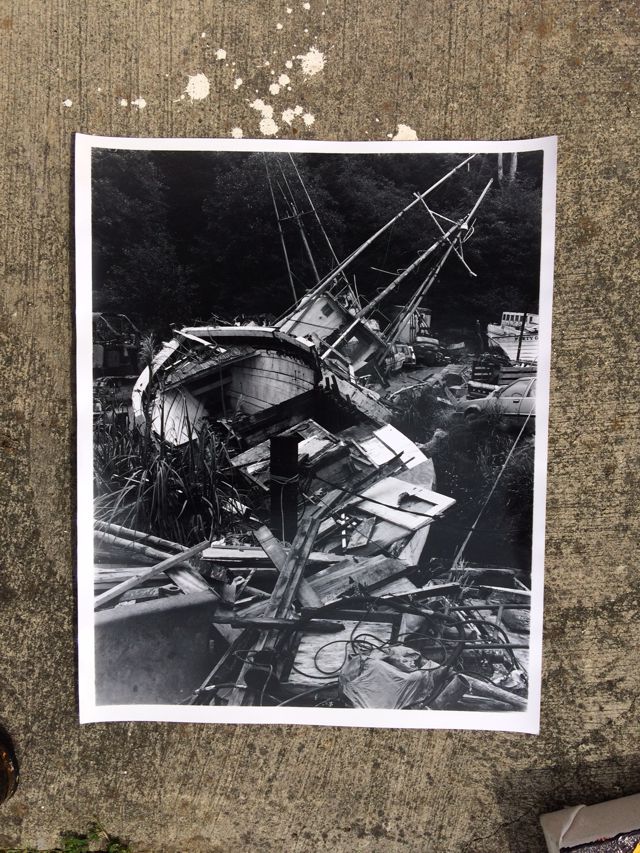
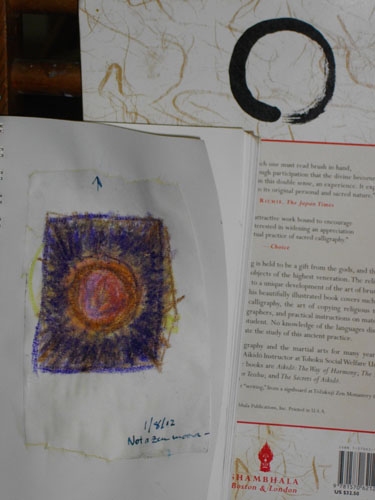
Kamol Tassananchalee and other Thai artists, together with me, standing in front of some of my paintings. Chiang Mai University, 2006.
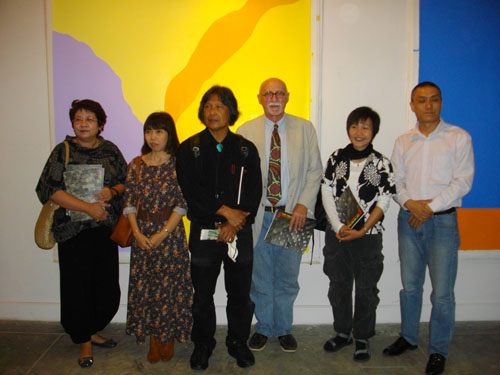
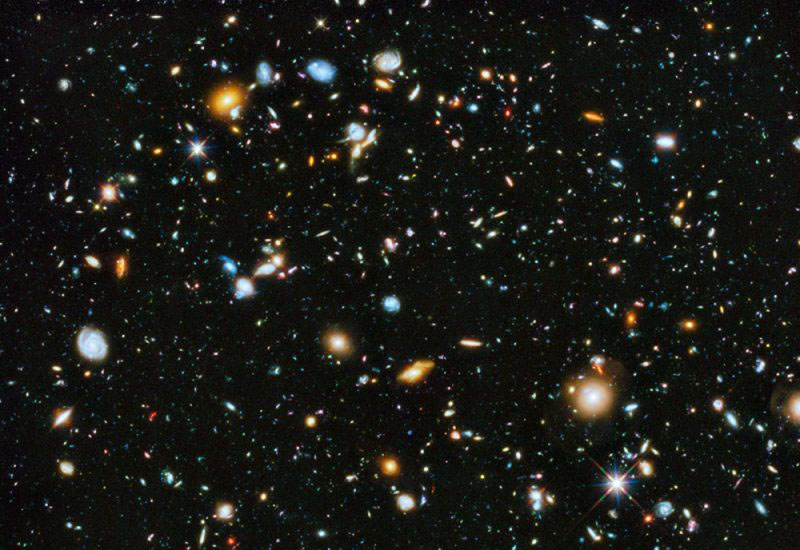
I make photographs as artworks. I take snapshots to document places or events, and to illustrate objects or ideas.
I use digital images for many purposes. I am ambivalent about using them to make artwork and have not yet done so.
There are billions of galaxies in the universe. There are billions of stars in each galaxy.
Every spot of light in this photograph is a galaxy
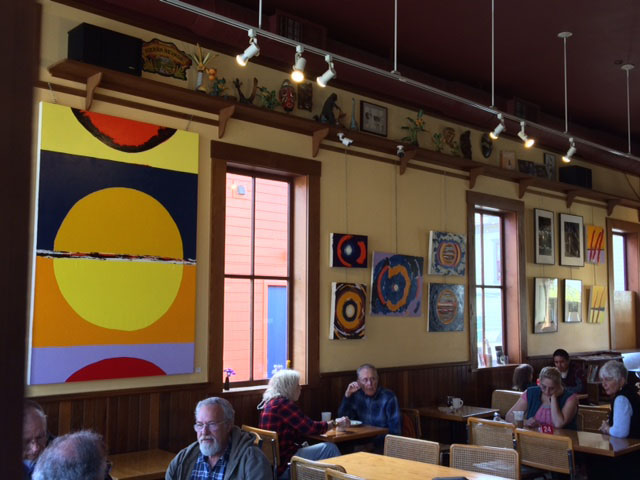
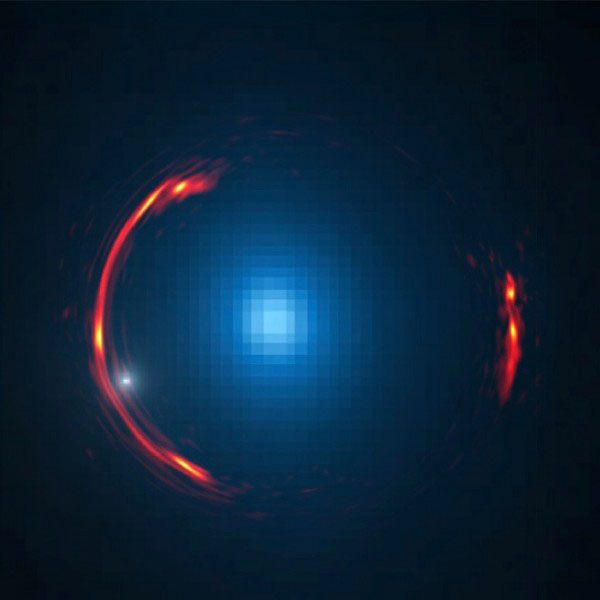
This circular form is the image of an Einstein ring that is several billion light years beyond our galaxy. It was captured at wavelengths beyond the visible portion of the spectrum, and digitally transformed into an image we can see.
I have used this arbitrary image as the starting point for several paintings, two of which are in the middle panel in the photograph to the left.
Humans cannot see the object represented by the image. Paintings encouraged by it cannot be said to meaningfully resemble it.
The rectilinear compositional format of the three photographs below is in keeping with Richard Diebekorn's landscape-inspired paintings.
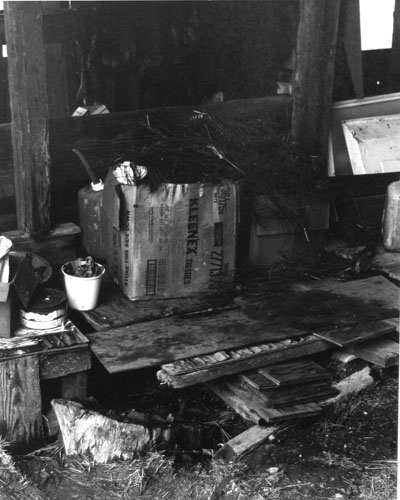
The photograph to the left is of the interior of the sheep barn on The Ranch, a commune north of San Francisco, where friends of mine have lived. My high school girlfriend raised her children on the ranch, and she and a friend started a daycare program there.
The photograph has a rich surface that reveals the character of the wood, and the texture of the dirt and straw on the floor. Sheared wool is faintly visible hanging in the background, framed by two vertical boards. The jumble of ordinary objects precludes a sentimental or picturesque reading of the image.
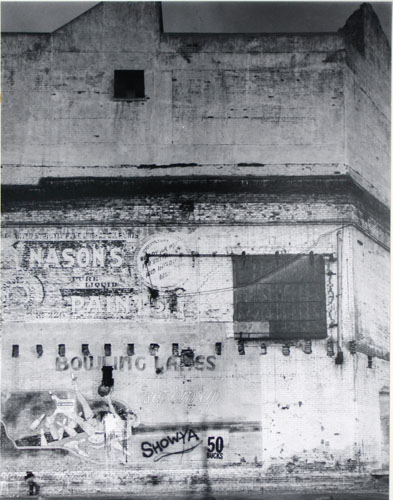
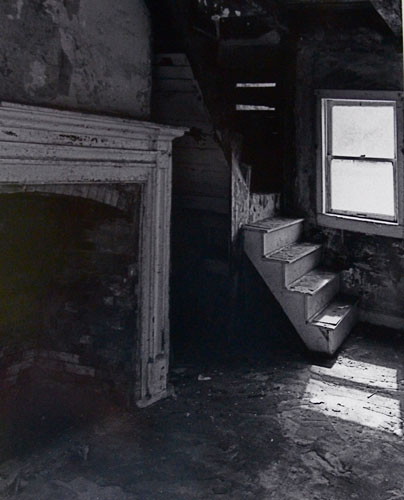
I made this photograph in the Little Tokyo district of downtown Los Angeles. I was attracted by the juxtaposed graffiti – “SHOW YA, ”which was sprayed on freehand, and “50 BUCKS” – which was stenciled. The building was on a parking lot behind the last location of the Atomic Cafe, frequented by LA artists, poets, and writers.
When the proprietors of the Atomic Cafe retired, Bibi Hansen and Sean Carrillo rented the building and operated Cafe Troy there for a few years. They hosted an exhibition of my photographs.
The SHOWYA 50 BUCKS building was demolished for parking. Troy was replaced by a Señor Fish restaurant.
Click the link to an article on the Atomic Cafe and Cafe Troy.
https://www.kcet.org/shows/departures/atomic-cafe-and-the-old-brick-building-in-little-tokyo
I was driving along a back road in central Ohio and I saw a partly dismantled 18th Century building. The owner invited me to photograph the interior. Uneven lighting and extreme contrast make this 16''x20'' enlargement from a 4''x5''negative challenging to print.
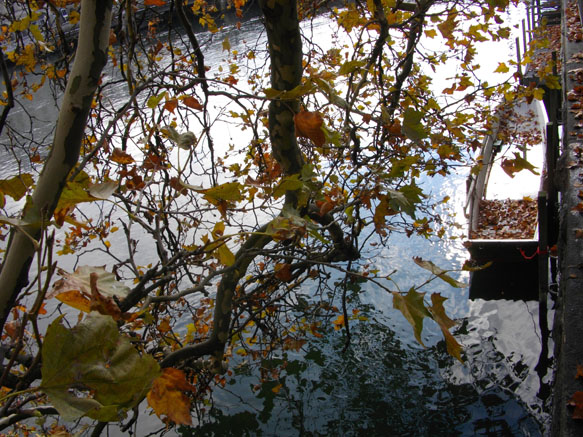
This digital snapshot is pleasing to look at. It may be the basis for a fine art print.
I began taking photographs with a plastic Kodak camera when I was in grammar school. At some point I started using 35 mm cameras. I have since the 1970's used Leica rangefinder and single lens reflex cameras.
About 30 years ago I discovered large format photography. I was attracted by the extremely high resolution of images printed from large negatives. I can see the image on the ground glass and manipulate the camera back and lens board to control depth of field and parallax. I enjoy the control of the image afforded by camera movements. Large negatives make it easy to employ darkroom procedures, such as burning and dodging, during the printing process.
Small hand-held cameras are a tool for taking pictures. Large format cameras are, for me, a medium for artistic expression.
I am engaged in an on-going study of the mechanics, materials, chemistry, optics, and history, of large format photography.
I initially developed and printed photographs in the bathroom. I subsequently moved my equipment into a darkroom which I shared with two other photographers. As soon as I bought my studio building on the Mendocino coast, I set up my darkroom there and intend to keep it for as long as I continue to work.
The history of optics, the development of perspective, and the invention of the camera obscura provide a happy nexus between painting and photography.
Around 1993, I bought a copy of California and the West, which contains photographs by Edward Weston, and an account written by Charis Wilson, describing the two-year Guggenheim-sponsored photographic project on which she accompanied Weston in 1937 and 1938. I have passed along copies to friends.
I examined the hundreds of prints Weston sold to the Huntington Library. When I read the Huntington’s copy of Charis Wilson’s typescript of California and the West, I learned that David Brower was one of the climbers that Wilson mentioned as having been on their excursion to Lake Ediza with Adams and his assistant, Ron Partridge.
I interviewed David Brower and Ron Partridge in their residences in Berkeley about the trip.
My first large format camera was a Cambo 4x5 monorail. I then bought a Deardorf 4x5 field camera. [image to the right]
I subsequently acquired a Canham 7x17 panoramic format camera, a Deardorff 11x14 and a Deardorff 8x20.
The numbers refer to the dimensions, in inches, of the negatives. Such large negatives when contact-printed directly on photographic paper can produce exquisite, crisply detailed prints.
Large format wooden field cameras are essentially 19th century machines. You can work on them with hand tools and a basic knowledge of woodworking.
I acquired an early Deardorff 8x10, which lacked front tilt and shift movements. With parts and much help and advice from Ken Hough, a Deardorff factory-trained technician and photographer, I disassembled and refinished the 8x10, and, with Ken's help, I added the necessary parts to bring it up modern specifications. Rebuilding that camera gave me the knowledge and skills to work on other cameras needing refurbishing or repair.
I was carrying the 7x17 in the woods. I slipped on a wet rock, landed on the camera, and broke its wooden frame. Using simple tools, and possessed of modest woodworking competence, I was able to repair the damage in a few hours.